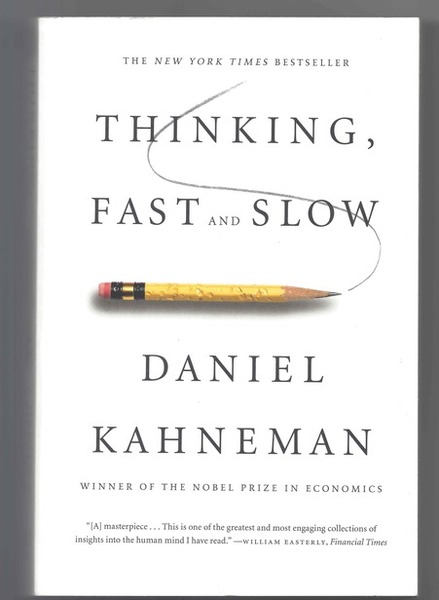‘Discusses a perplexing but very interesting subject’
Published 1:00 am Sunday, June 15, 2014

- 'Discusses a perplexing but very interesting subject'
“Thinking, Fast and Slow,” by Daniel Kahneman. New York: Farrar, Straus and Giroux, 2013. 499 pages, $16.
“Thinking, Fast and Slow” represents five decades of rigorous scientific work by the author, Dr. Daniel Kahneman. He delivers in explanations for why we think our decision-making process is deliberative, rational and logical. The truth is our decisions are significantly influenced by unrecognized biases and intuition.
Trending
Kahneman is the Eugene Higgins Professor of Psychology Emeritus at Princeton University and Professor of Psychology and Public Affairs Emeritus at Princeton’s Woodrow Wilson School of Public and International Affairs. He earned the 2002 Nobel Prize in economic sciences for his pioneering work on decision making with Amos Tversky. He is a recognized authority in the field of psychology and human behavior and a prolific research writer.
Jim Holt of The New York Times book review said that Kahneman’s “Thinking, Fast and Slow” is “an astonishingly rich book: lucid, profound, full of intellectual surprises and self-help value … (I) urge everyone to buy and read it.” I wholeheartedly agree.
Kahneman combines research from several fields of study (e.g., psychology and business) to surprise the reader with ideas about decision making, which become obvious once told. “Eureka!” moments occur as each page is read.
Kahneman suggests two systems describe how humans think and make decisions. To avoid using technical psychological terms and descriptors, he uses System 1 to describe thinking that is fast, intuitive and emotional. System 2 describes thinking and decision making that uses mental processing and is slower, more thoughtful and deliberative than System 1. System 2 incorporates logical thinking, while System 1 incorporates innate gut reactions.
My favorite example of System 1 versus System 2 thinking came in Chapter 3 titled “The Lazy Controller.” The example is a simple puzzle:
A bat and a ball cost $1.10.
Trending
The bat costs one dollar more than the ball.
How much does the ball cost?
A number came to your mind. The number was probably 10 cents. The distinctive mark of this puzzle is it evokes an answer that is intuitive, appealing and wrong. Do the math and you will find out why. If the ball costs 10 cents, then the total cost will be $1.20 (10 cents for the ball and $1.10 for the bat), not $1.10. The correct answer for the cost of the ball is 5 cents.
Each chapter of “Thinking, Fast and Slow” has questions such as the one just posed. If for no other reason, read the book to test your decision-making skills. You will be entertained and learn a thing or two. I found myself re-reading the decision-making experiments and trying them on friends.
The book has five parts. Part I, Two Systems, explains the differences and similarities between System 1 and System 2. Part II, Heuristics and Biases, discusses the role numbers, emotions and risk play in decision making. Part III, Overconfidence, examines how we accommodate ourselves to the human inclination toward over-confidence when making decisions after incorporating illusions of understanding. Part IV, Choices, looks at how framing information affects decision making; and Part V, Two Selves, concludes that how we remember an event affects how we will make decisions about a similar event in the future.
Each part has from nine to 14 short chapters with titles such as “Attention and Effort,” “Norms, Surprises, and Causes,” “The Law of Small Numbers,” “Taming Intuitive Predictions,” “The Illusion of Understanding” and “Life As A Story.” Let me warn you: Some of the titles are misleading.
The only drawback I found with “Thinking, Fast and Slow” was each chapter does not necessarily stand alone, but must be read in the context of the part in which it is located or with knowledge from reading previous chapters. Kahneman forces you to read the entire book to fully understand how and when System 1 and System 2 come into play.
Kahneman does not try to convince the reader of the validity of his two-part model for thinking. He allows the reader to decide. He engages the reader in a lively conversation about how we think.
“Thinking, Fast and Slow” is a very interesting and engaging book that reveals where and when we can and should trust our intuition and when we should proceed more slowly. It discusses a perplexing, but very interesting subject … thinking.
— Reviewed by Harold Little, Western Kentucky University accounting department.







